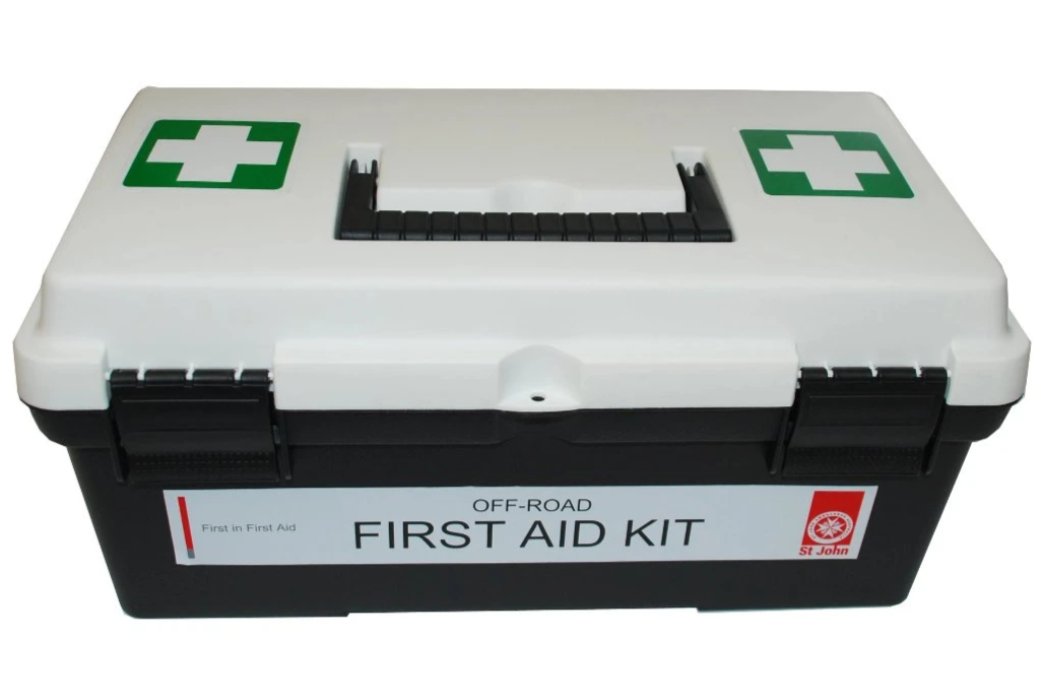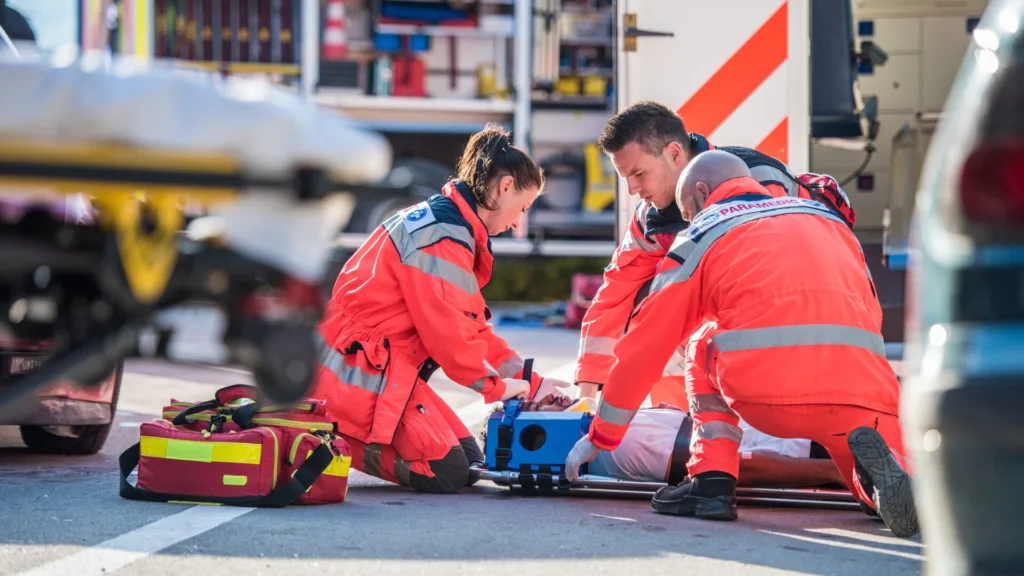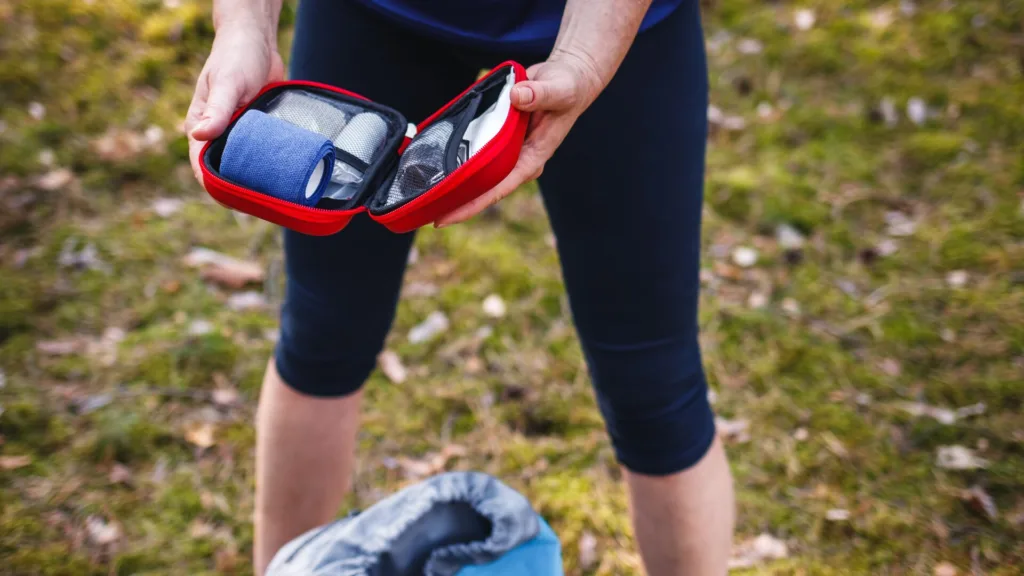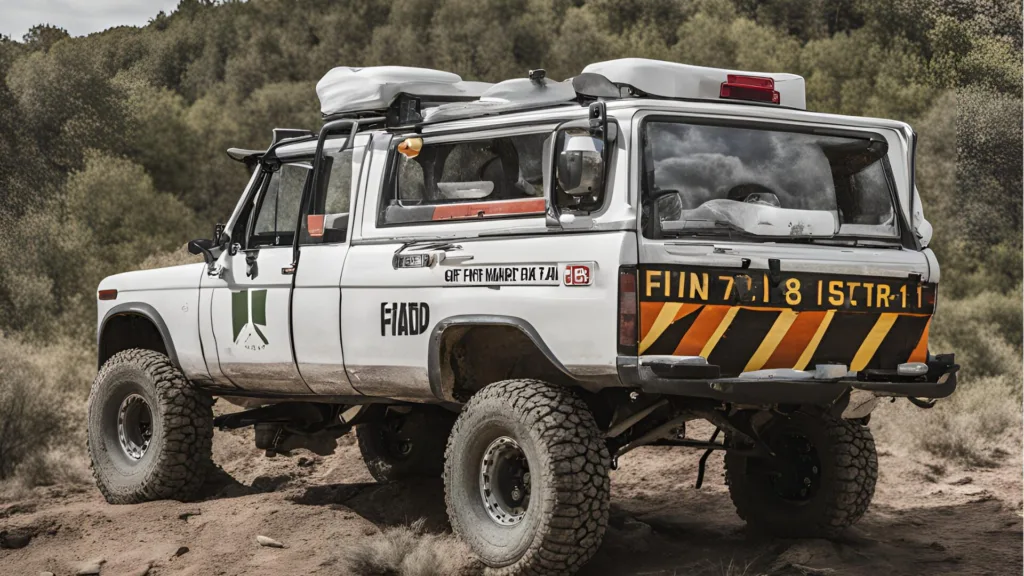Off-Road First Aid is essential for addressing emergencies away from standard medical facilities. It involves specialized knowledge to tackle potential injuries in remote areas.
Engaging in off-road activities like mountain biking, four-wheeling, or hiking brings adventure seekers into contact with nature’s unpredictable elements. As thrilling as these excursions can be, they also carry the risk of incidents and injuries that require immediate attention. Being prepared with a comprehensive off-road first aid kit and having the skills to use it can make the difference in preventing a minor injury from becoming a critical situation.
It’s vital for adventurers to gain knowledge in first aid techniques suited to the wilderness, ensuring a safe and enjoyable outdoor experience. By understanding and preparing for these risks, off-road enthusiasts can embrace adventure with a greater sense of security.

Gearing Up For Safety
Before tackling rugged terrains and remote trails, safety should be a top priority. Preparing for emergencies is critical when far from immediate help. A well-stocked first aid kit and the right tools can mean the difference in off-road adventures. Let’s ensure your gear is up to the task.
Essential First Aid Kit Items
Every off-roader needs a robust first aid kit. Your kit must include items for a range of injuries. Here’s what should be inside:
- Bandages: Various sizes for cuts and scrapes.
- Gauze pads: To stop bleeding and dress wounds.
- Adhesive tape: Keeps dressings in place.
- Antiseptic wipes: Clean wounds to prevent infection.
- Tweezers: Remove splinters or debris.
- Scissors: Cut tape or clothing.
- Disposable gloves: Protects against blood and fluids.
- Pain relievers: Such as ibuprofen or acetaminophen.
- Thermometer: Check for fever.
- Emergency blanket: Retain body heat in shock cases.
- Instruction booklet: Quick reference for emergency care.
Vehicle-specific Supplies And Tools
Your off-road vehicle requires its own set of tools and resources. In case of mechanical issues, be ready with these items:
| Item | Use |
|---|---|
| Tire repair kit | Fix flats without a spare. |
| Air compressor | Inflate tires on the go. |
| Jumper cables | Jump-start your battery. |
| Tow straps | Pull out stuck vehicles. |
| Multi-tool | Handle various minor repairs. |
| Flashlight | See in the dark, signal for help. |
| Duct tape | Temporary fixes on many surfaces. |
| Extra fuel | Avoid getting stranded without gas. |
By packing these essentials, you put safety first. Enjoy off-road exploration with peace of mind, knowing you’re prepared for the unexpected.

Common Off-road Injuries And Immediate Actions
Off-road adventures can lead to unexpected injuries. Quick response is key. Knowing what to do can make a huge difference. Let’s dive into common injuries and immediate actions.
Scrapes And Cuts: Cleaning And Dressing
Simple scrapes and cuts are common off-road. Immediate cleaning prevents infection. Always carry a first aid kit.
- Use clean water to wash the wound.
- Gently pat dry with a sterile cloth.
- Apply antibacterial ointment if available.
- Cover with a sterile bandage or gauze.
Fractures And Sprains: Stabilization Techniques
Fractures and sprains need care to prevent more harm. Stabilizing the injury is crucial. Do not move the person unnecessarily.
- Stop any bleeding by applying pressure.
- Immobilize the area using a splint.
- Keep the injury at heart level if possible.
- Apply ice to reduce swelling.
- Seek professional medical help quickly.
Dealing With Environmental Hazards
Outdoor adventures can lead to unexpected situations, especially when off-roading. Knowing how to handle environmental dangers is key to safe exploration. This includes understanding and addressing the perils of extreme temperatures. Lets dive into essential first aid tips for dealing with heat-related issues and cold exposure.
Heat Stroke And Dehydration: Prevention And Treatment
Heat stroke is a serious condition that can occur during intense off-road outings. Staying hydrated and cool is vital for prevention.
- Drink water every 15 minutes.
- Wear lightweight, breathable clothing.
- Take breaks in the shade or create your own.
| If heat stroke hits: | Action to take |
|---|---|
| Move the person to a cooler place | Immediate rest is crucial. |
| Cool them down | Use water and fans. |
| Monitor body temperature | Seek medical help if it doesn’t drop. |
Cold Exposure: Hypothermia And Frostbite Management
Cold weather brings risks like hypothermia and frostbite. Early recognition and action can save lives.
Hypothermia:
- Identify signs: shivering, exhaustion, confusion.
- Warm the person slowly.
- Avoid hot baths or direct heat sources.
Frostbite:
- Look for white or grayish-yellow skin areas, numbness.
- Gently warm with body heat. Do not rub.
- If symptoms persist, seek medical attention.
Navigation And Communication In Emergencies
Imagine you’re exploring the wild, and suddenly, you need help. Your tools? A GPS and a radio. Big question: Can you use them? You’re about to learn how, so even the deep woods aren’t a worry. Let’s get you ready for anything off-road!
Using Gps And Radios Effectively
Getting lost is not an option with a GPS by your side. Kickstart it before you trek out. It will track every turn.
- Update your maps – Roads change, trails shift, stay current!
- Mark your start point – If you need to backtrack, you’ll know where to go.
- Radio check – Keep batteries charged, spares handy, and signals clear. You’ll stay connected.
- Know your channels – Which ones are for emergencies? Learn them.
- Repeat your SOS – Got an emergency? Stay calm, and signal SOS on the radio.
With these tips, your tech helps you, not confuses you, in the wild.
Signaling For Help When Stranded
You’re stuck and your tech’s dead. Now what? Time to signal SOS.
- Whistles – Carry one. Three sharp blasts mean you need help.
- Mirrors – Catch some sun. Flash it skyward. Someone might see.
- Fires and Smoke – Make three. It’s a universal distress signal.
- Bright gear – Got anything neon? Put it high. It’ll catch eyes.
Remember, three is the magic number, whether it’s whistles, fires, or flashes. It’s the international help call!
Training And Preparedness
The unpredictable nature of off-roading adventures makes training and preparedness crucial. A well-equipped first aid kit is essential, but knowing how to use it is equally important. This segment will dive into why off-roaders should obtain first aid certifications and how conducting mock drills can enhance emergency response skills.
First Aid Certification For Off-roaders
Securing a first aid certification can make a significant difference during unexpected incidents. Courses designed for off-roaders often cover:
- Trauma management
- Bandaging and splinting
- CPR techniques
- Handling bites and stings
These certifications empower individuals to remain calm and deliver effective aid. They can keep an injured person stable until professional help arrives.
Mock Drills: Practicing Emergency Scenarios
Mock drills simulate real-life emergency scenarios. Through these exercises, off-roaders practice:
- Assessing victim conditions promptly
- Applying first aid effectively
- Executing evacuation strategies
Regular drills reinforce knowledge, ensuring it becomes second nature when facing actual emergencies. Practicing with fellow enthusiasts can also help build a strong, cooperative team, ready to tackle challenges on the trails.

Post-incident Procedure
The adrenaline rush from an off-road adventure can mask injuries. Once the dust settles, proper post-incident procedures are critical for the well-being and safety of all parties involved.
Documenting The Incident
Clear documentation is essential after any accident. Start with:
- Date and time of the incident.
- Location details, including GPS coordinates if possible.
- Injuries observed and first aid provided.
- Names and contact information of involved parties.
- Photos of the scene and injuries, for records.
Use a pen and paper, or a smartphone, to capture this information.
Seeking Professional Medical Follow-up
After providing first aid, seek professional medical attention, even for minor injuries. Here’s a quick checklist:
- Contact emergency services if not yet done.
- Visit a doctor for a thorough check-up.
- Follow up with any recommended treatments or check-ups.
Remember to provide the doctor with the documented information.
Frequently Asked Questions For Off-road First Aid
What Essentials Are In An Off-road First Aid Kit?
A basic off-road first aid kit should include bandages, antiseptic wipes, gauze pads, adhesive tape, scissors, tweezers, pain relievers, and an emergency blanket. It’s tailored for common injuries encountered in remote areas.
How To Manage Snake Bites When Off-roading?
For snake bites, immobilize the bitten area and keep it below the heart. Avoid suction or tourniquets. Wash with soap and water. Seek immediate medical help. Do not attempt to capture the snake.
What Are The Signs Of Heat Exhaustion Off-road?
Symptoms of heat exhaustion include heavy sweating, weakness, cold, pale and clammy skin, fainting, and vomiting. Stop all activity, move to a cooler place, and drink plenty of water if these signs appear.
How To Treat Fractures On Off-road Trips?
Immobilize the limb using splints without trying to realign it. Use a sling or padding around the injury for support. Keep the patient still and seek professional medical assistance as soon as possible.
Conclusion
Venturing off the beaten path presents unique challenges; preparation is vital. Your first aid skills can make a difference in unexpected situations. Keep your kit stocked, knowledge sharp, and stay calm. Safe travels and happy trails as you confidently tackle the adventures ahead with your newfound off-road first aid expertise.


